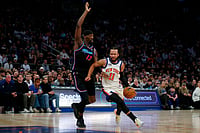IN 1965, when it appeared in New Yorker, "Hapworth 16, 1924" left most of the fans disappointed, a feeling shared by the general Salinger fan even today. The story, except for a brief introduction from Buddy Glass, is a letter from Seymour, then aged seven, addressed to his parents, Les and Bessie, and to Boo Boo, Walter and Waker. Buddy is with Seymour— and Zooey and Franny are not yet born.
The most common complaint has been that the story should have been at most half its published length, ending at the point where Seymour finds another pad of paper and takes off again in what has been called "a pompous display of erudi-tion". The Los Angeles Times commented in 1988 that it "was widely regarded as narcissistic, prolix and ultimately obscure in its intent". Almost all the "serious" critics— Warren French, John Updike et al, have been dismissive of Hapworth, and Alsen Eberhard is perhaps the only one of note who has tried to establish that it is better than generally supposed.
In In Search of J.D. Salinger, Ian Hamilton wrote that the story is "a weird, exasperating tour de force... 'Take it or leave it' is Salinger's unmistakable retort to any grumbles from the non-amateurs among his audience and he seems fairly certain (indeed makes certain) that most of them will leave it.... The Glass family has, in this last story, become both Salinger's subject and his readership, his creatures and his companions."But, calling it "the Dead Sea Scrolls of the Salinger cult", critic Ron Rosenbaum felt that "somewhere buried in it might be the key to Salinger's mysterious silence ever since". Could Salinger's decision to reprint the story be proof of that?






















